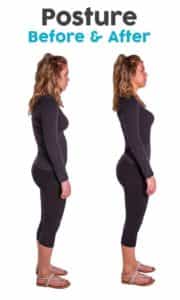With so many of us now working from home Dr. Hewitt puts together some advice and recommendations to address ergonomics and posture in this setting.
- First, assess where in the home you plan on working from and what resources you will need as well as what resources you have available to you. For example, take into account the space you need and have available. If possible, create both seated and standing work stations
- What items do you have at home and are they inadequate? For example, if you suffer from chronic low back pain, crouching over while seated in an old barstool may not be a great idea. After assessing what resources you have and may need, consider the option of discussing with your workplace to temporarily move the standing desk, chairs, raised computers stands, and other ergonomic office furniture/equipment from work.
- Stretching and exercising are important whether you’re in your suit/tie or footed pajamas! Maintaining daily regimens regarding stretching/strengthening routines will keep your joints from stiffening up. Some may even consider utilizing any extra time in schedule from decreased commute time to augment what you are normally performing. Consider branching out and trying something new — Have you ever wanted to try yoga but never had the time? There are many free and paid resources online right now for you to use! If any questions, please be sure to contact your physician for guidance.
- Regarding desk and specifically whether to sit or stand: There is no wrong answer, only the right answer for YOU. In respect to this issue, I regularly fall back on the old adage of “moderation in all things”; That said, look at your workday and as you put your schedule together look for opportunities to create movement whenever/wherever possible. Literature regarding productivity is clear that short focused periods of concentration prove far more beneficial in the efficiency arena than a multiple hour slogfest (this same concept applies to stretch/strengthening activities).
- When sitting, the goal is to have a chair that supports, not dictates your sitting posture. You want to actively engage muscles of the abdomen and to a subtle, lesser degree of the glute. If your chair has an armrest, I suggest adjusting the settings to allow for the forearms to be cradled. This allows the shoulders to sit in a neutral posture. Have your head in line with your pelvis and be sure to have whatever device you are working on high enough to prevent the head from tilting forward.
- For me, the rules regarding stretching pre/post workday remain the same. I usually allow for 5-10 minutes of stretching both before and after. I also recommend quick stretch and hold exercises for muscles and joints of the hands, wrist, elbow, shoulders, cervical spine, lumbar spine, and calf’s — this global approach allows for an assessment of areas that may require a little increase in attention.
- I think this is also a great time to address the new (actually not so new) condition known as “tech neck”. Tech Neck is where your head is in a forward posture that spine doctors and my grandmother have been trying to eliminate for years. This condition is a combination of several things, some we can control while others are luck of the draw. What we can control, and specifically relating to this article, is posture and the same concepts detailed above. The additionally inherent strength of glutei, core musculature, muscle of the pectoral girdle, posterior shoulder girdle and paraspinal groups play quite an obvious role in how well we oppose gravity, and in my opinion, the terms strength and flexibility should be married together, as one without the other is of very little use.
- Another recommendation is to be aware of the camera on your computer/tablet and make sure it is turned off when not in use. This will hopefully prevent hackers or other internet scams to be able to access your camera when you are not aware or give permission. A simple but powerful reminder during these unprecedented times.
Lastly, always look for small daily changes and be consistent on the big things.



